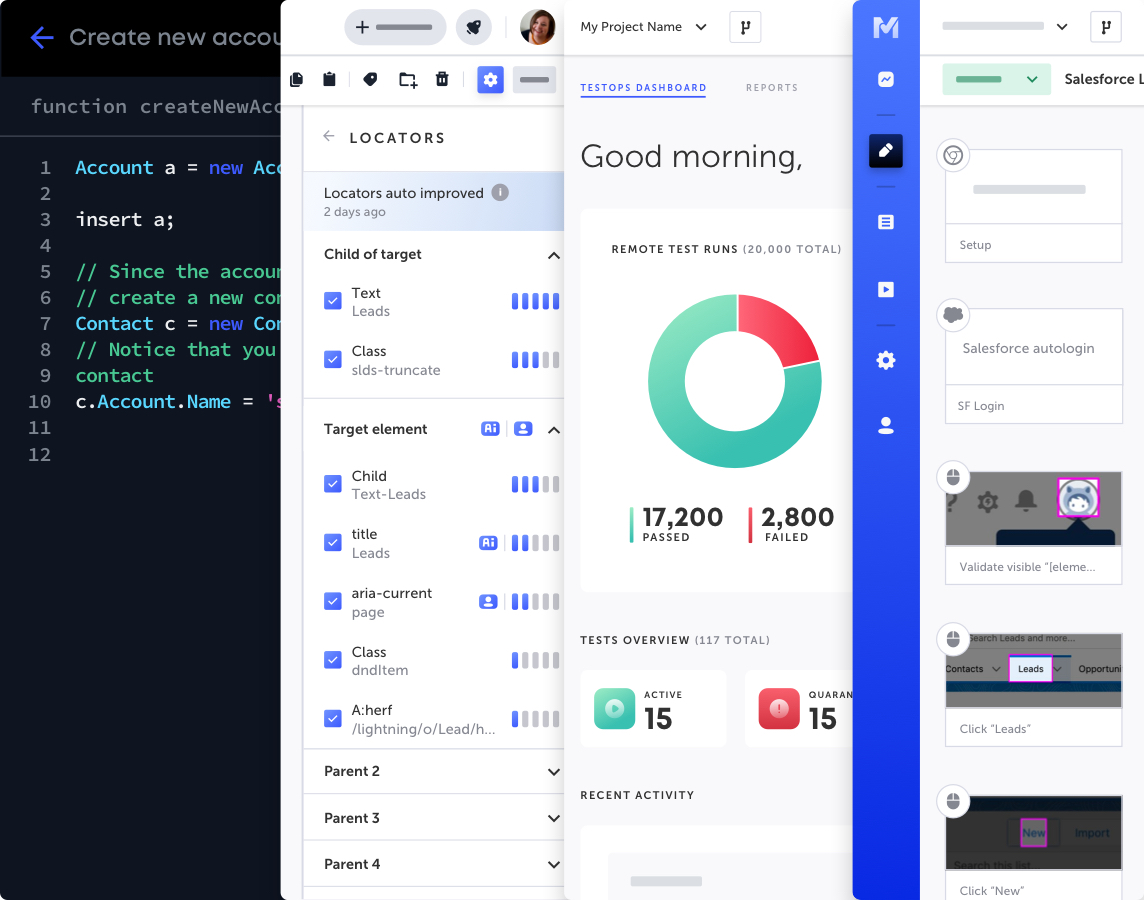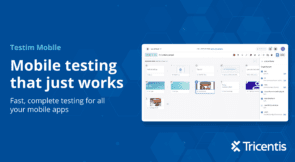Was 2021 a good year, or did 2020 set the bar super low? There’s certainly a lot to be grateful for in 2021. There is some semblance of normalcy, like traveling for business or seeing family and friends. Yet, many things are still odd, like virtual conferences, masks on planes, and supply shortages.
I’m happy to have worked with the great team at Testim in 2021. It was a record year on many fronts: free and paying customer growth, test runs executed, customer support approval rating, community growth, and more. We also made huge inroads advances towards our mission of making software quality easy.
First, I’ll recap some of the highlights of Testim’s 2021 and then give you some hints regarding what’s ahead in 2022.
Product Enhancements
Let’s start with some of the amazing product enhancements we released in 2021.
TestOps
Testing Operations are increasingly critical as teams push to accelerate releases through continuous testing. When the agile team, their tests, and the number of releases are multiplying, you need tools to help you scale testing operations efficiently. TestOps capabilities enable improved planning, efficient management of teams and tests, streamlined processes, and better insights for continuous improvement.
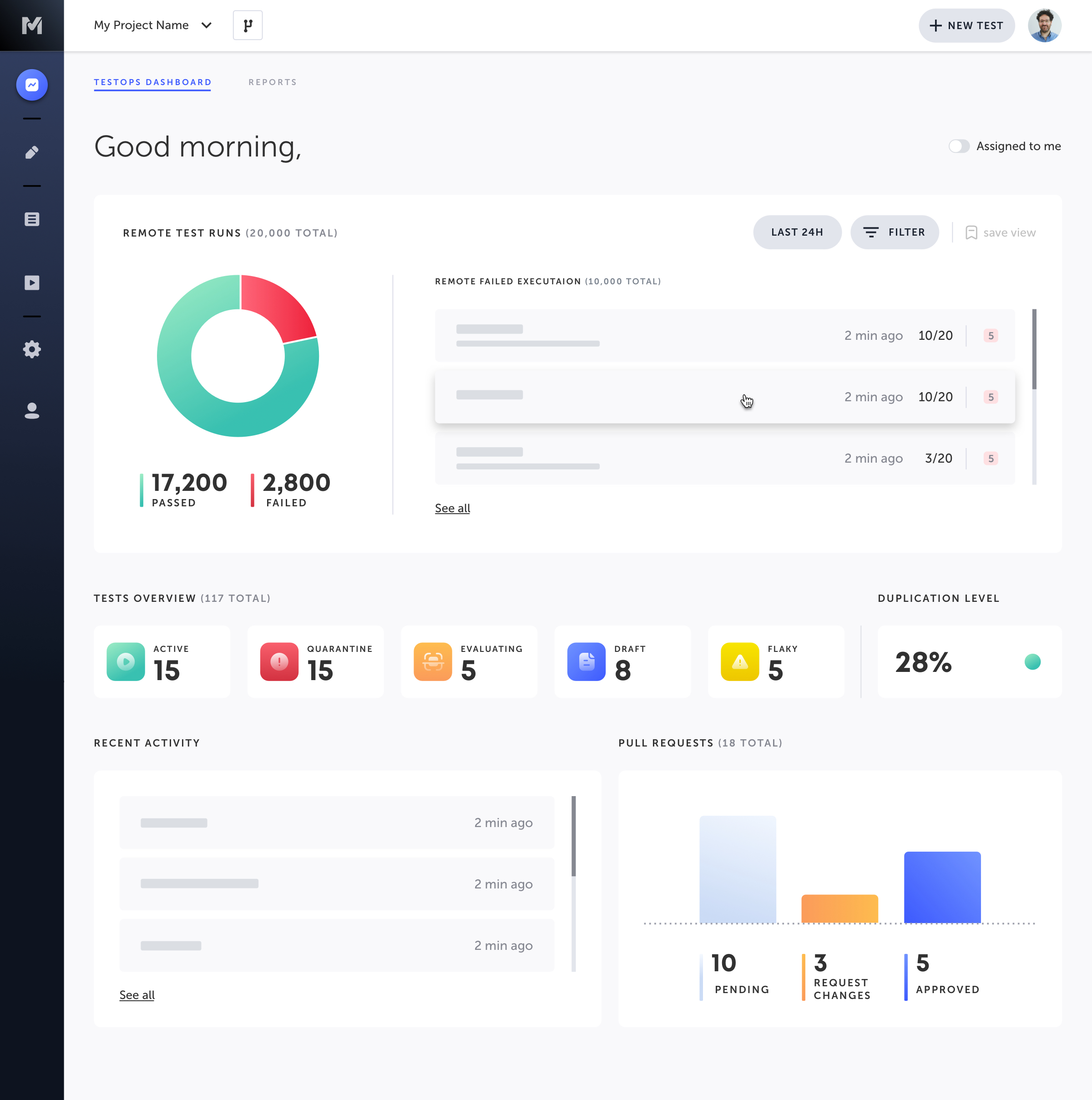
TestOps Dashboard – Starting with the most visible change, the dashboard helps managers and individual testing contributors quickly see and prioritize their work. They get real-time views of testing results, recent activities, or changes to tests.
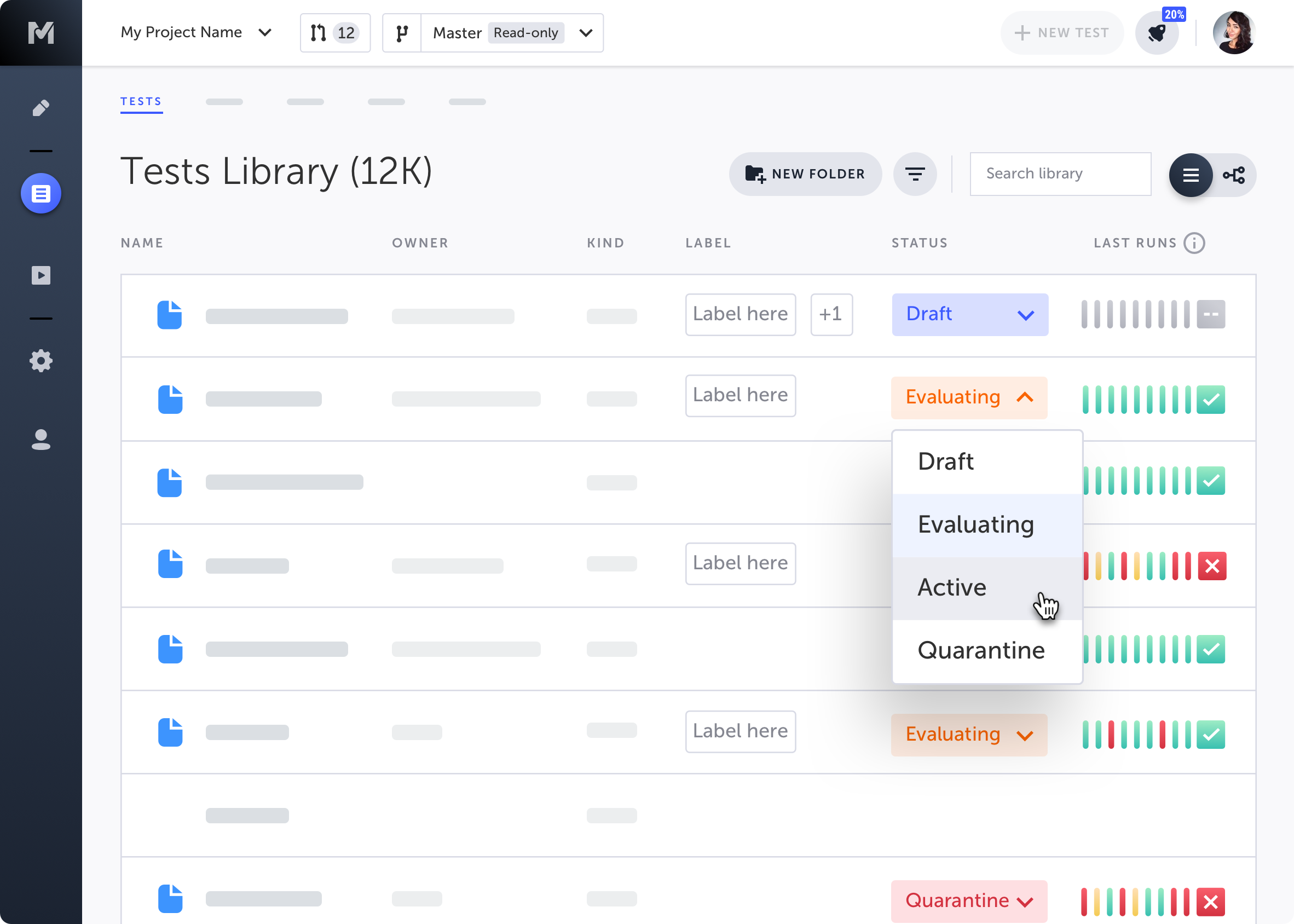
Test Library – In addition to using labels, suites, and plans, teams have added flexibility to organize their tests using folders. These versatile organizing mechanisms help teams find tests faster and help managers understand how features (and testers) perform.
Test Owner – Clear ownership of tasks helps minimize redundancies. It also helps managers understand where additional training or help may be needed. Test ownership also enables individual contributors to see and prioritize their testing activities easily.
Test Status – Users can adjust the test status from draft to evaluate, active, and quarantine. Each status affects how CI/CD systems handle test results, so teams can prove the tests before generating false positives and failing CI builds. The result is fewer failure fire drills and improved trust.
Pull Requests – Like code, you should treat your tests as critical assets that require approvals to change. Pull requests help teams control changes to tests to ensure they meet high standards. Teams can require reviews of changes before adversely impacting tests or suites.
3-Way Merge – Merging test branches shouldn’t force you into an all-or-nothing decision. You need granularity to see what has changed and cherry-pick the changes you want to keep.
Faster authoring of stable tests
We continue to make authoring tests faster and cleaner to facilitate test stability. Next, I’ll highlight a few of the most significant enhancements in this area.
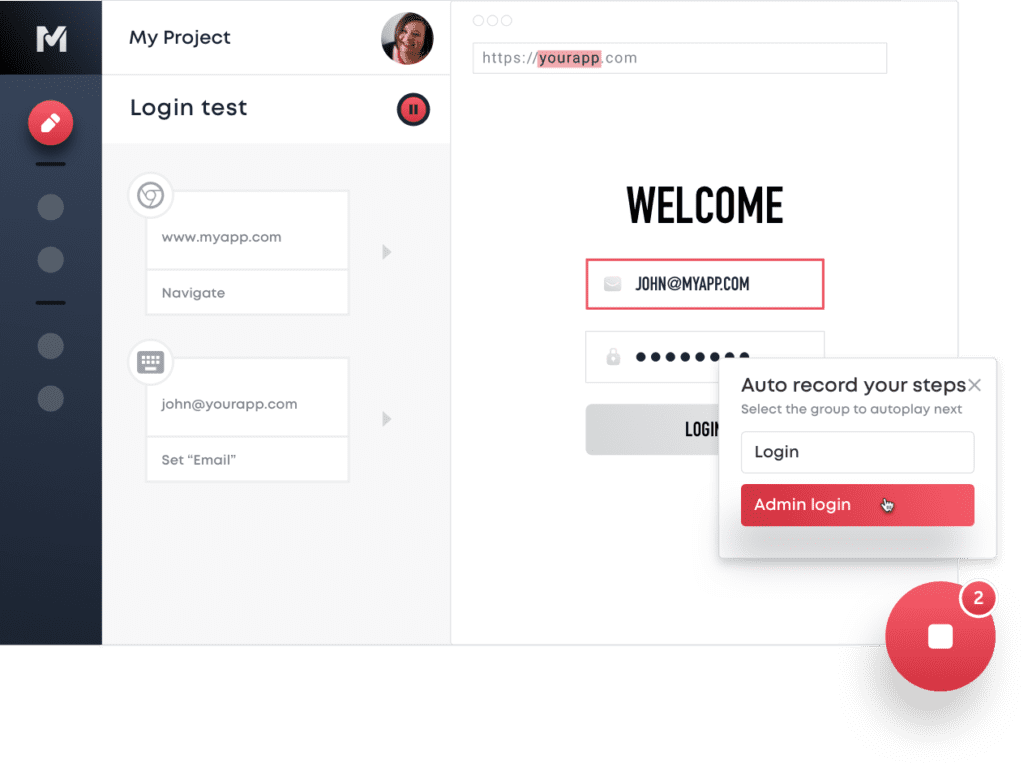
Auto-complete – While recording, auto-complete identifies and suggests pre-existing groups so you can speed authoring while automatically reusing shared groups. Auto-complete helps minimize duplicate authoring and contributes to cleaner, well-designed tests.
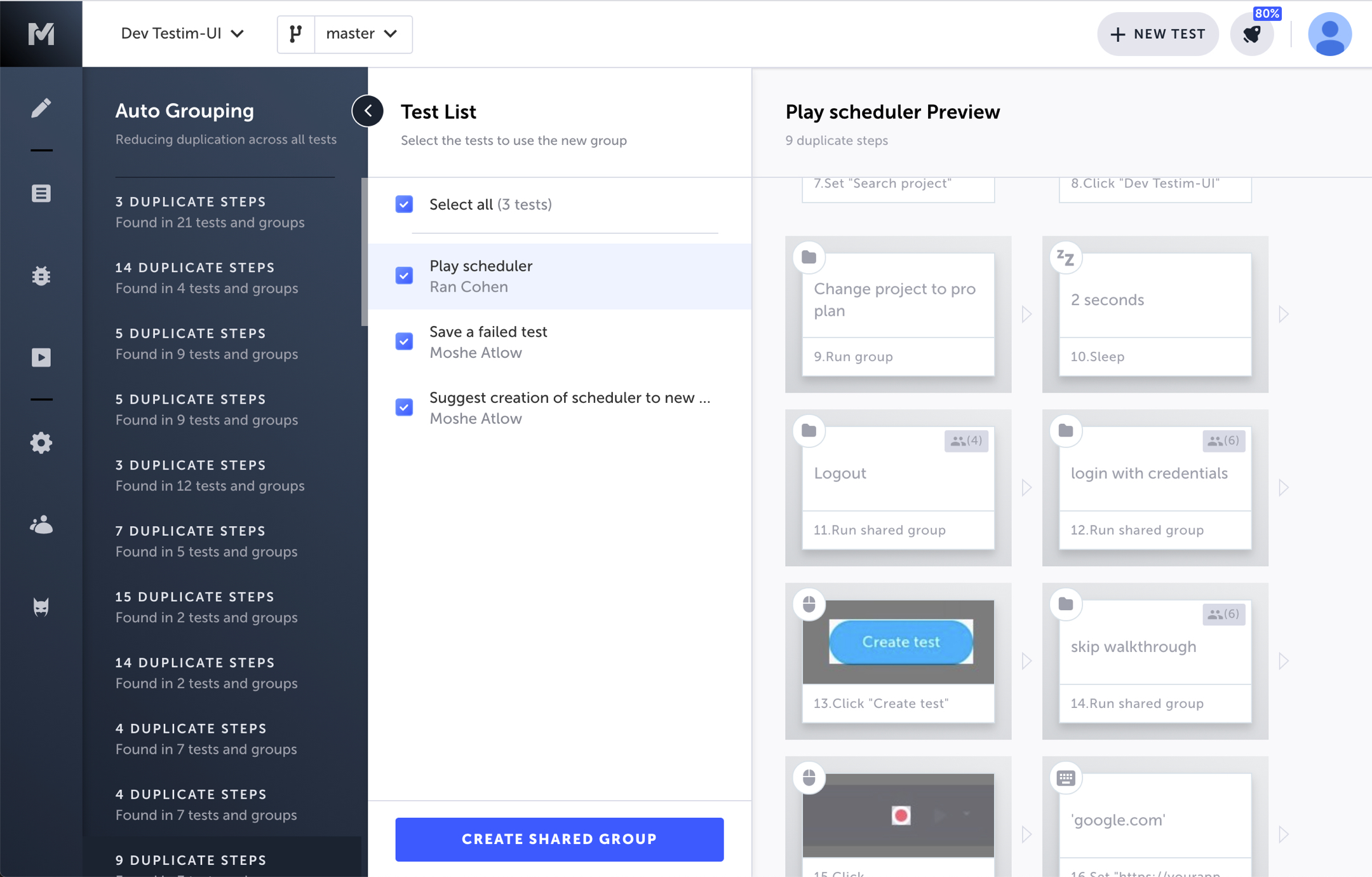
Auto-grouping – To improve test architecture, Testim looks across your tests for duplicate steps and can automatically replace them with reusable groups that reduce maintenance. No other low-code solution can automatically refactor their tests to reduce duplication.
Auto-mapping and filtering – Dynamic or random CSS identifiers confuse most test automation tools. Testim identifies when locator attributes change frequently and filters out the random components to focus on the stable properties.
Advanced JavaScript editor – When you write code to customize your tests, Testim now includes an advanced JS editor built on Monaco to help you write code faster, with fewer errors.
Other Coolness
There were some other capabilities worth mentioning that don’t fit into tidy boxes. Here are a few you might have missed.
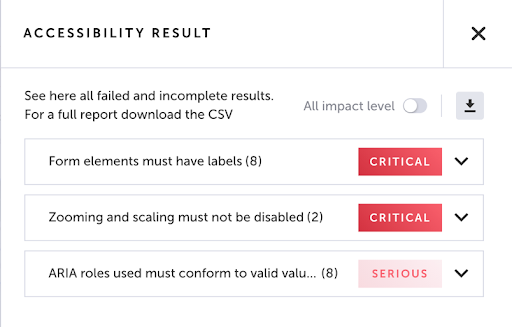 Accessibility testing – Rather than rely on separate tools, you can now test for accessibility within your Testim test. Test an element or the entire page for compliance with accessibility guidelines in minutes.
Accessibility testing – Rather than rely on separate tools, you can now test for accessibility within your Testim test. Test an element or the entire page for compliance with accessibility guidelines in minutes.
Turbo mode – Who wants faster tests? Everyone, especially developers trying to run a sanity test. Turbo mode runs tests up to 30% faster by not saving some test artifacts on successful test runs. Don’t worry; if your test fails, you’ll still have access to our robust troubleshooting info.
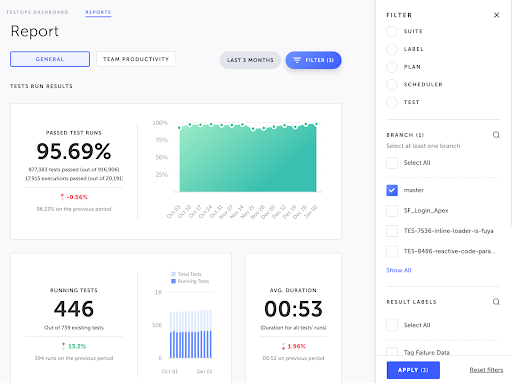 Reports improvements – We increased the report’s history so teams can see up to 12 months of results. We also improved filtering enabling reporting by label, suite, test name, or other attributes. Demonstrating release readiness or proving quality progress has never been easier.
Reports improvements – We increased the report’s history so teams can see up to 12 months of results. We also improved filtering enabling reporting by label, suite, test name, or other attributes. Demonstrating release readiness or proving quality progress has never been easier.
Grid stability – in 2021, Testim improved the stability of our testing grid providing high-availability failover to keep tests running smoothly. Our grid uptime was over 99.9% for the year, and we expect that to continue to go up.
Salesforce testing
Let’s shift gears a little from thinking about features to another vertical segment.
Salesforce applications are often tightly integrated into critical business processes and applications. A bank might have a web front end where a new prospect can signup for an account. Behind the scenes, data is transferred into Salesforce. Testing the complete end-to-end flow is often very hard for vendor tools that claim to be “designed for Salesforce.”
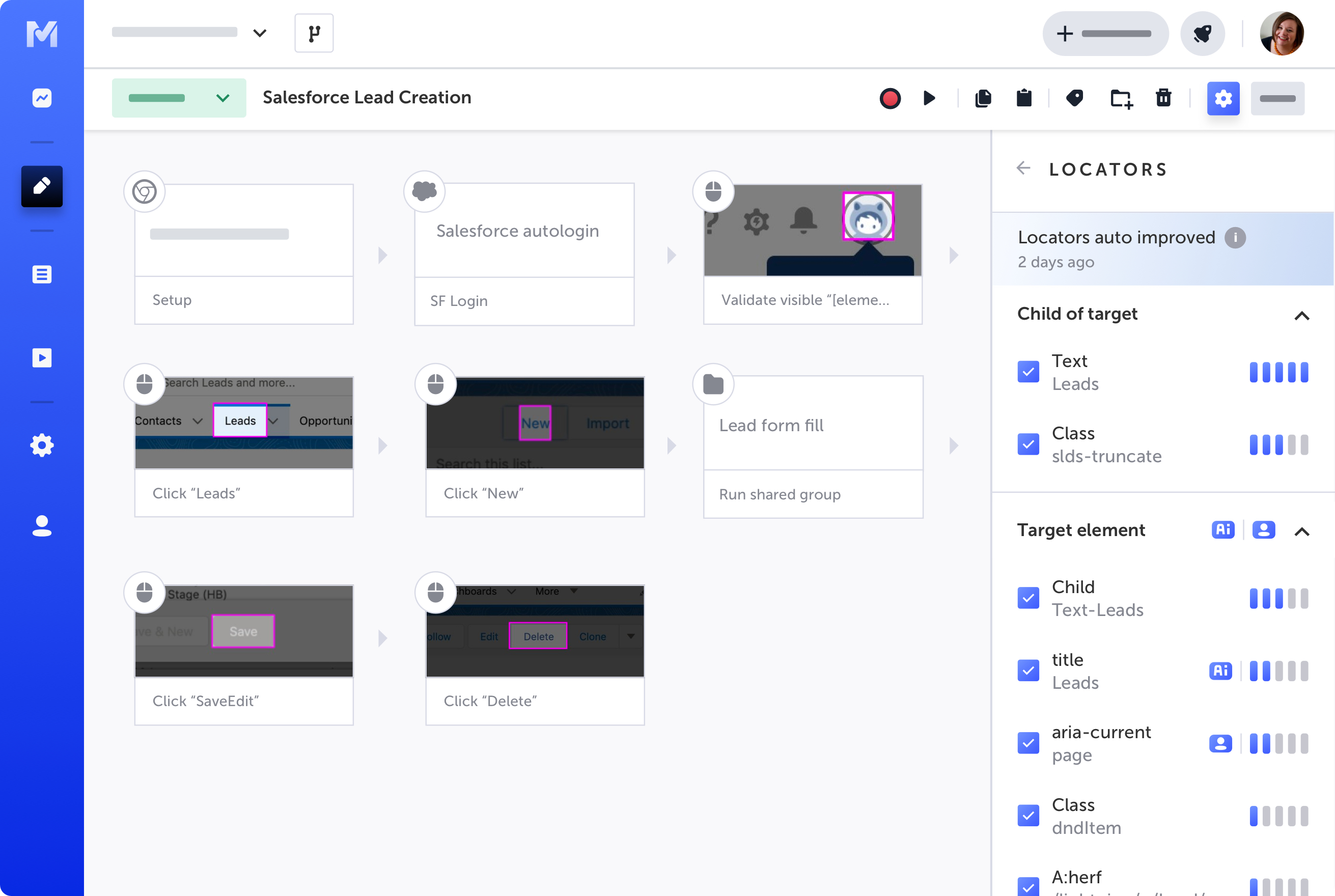
Testim for Salesforce is a new product built on Testim’s AI-powered fast authoring and stability with specific features to make Salesforce testing easier. Testim already handled many tough challenges like shadow DOM and dynamic objects common in Salesforce. It’s why Testim had dozens of customers (including Salesforce) running millions of Salesforce tests each month. This new offering adds specific features for Salesforce, such as adding custom Apex. Stay tuned for more in 2022!
There were many more enhancements during the year. Some may seem minor, like updating the look and feel of parts of our application, but we believe they add consistency and contribute to improved usability. You can check out feature enhancements as we release them in the changelog.
Rapid growth
2021 was about more than enhancing an already excellent product; it was about improving the overall experience for our customers and preparing for the next phase of growth. We grew in all aspects of our business, including doubling the number of paying customers and ARR and growing test runs executed by over 220%. We also expanded the size of our team by over 20% with key additions in engineering, support, and customer success to ensure our products are innovative and we take care of our customers.
Support quality
We continued to invest in our support team, adding resources to ensure we maintained quick response times (<1min). Our customer support approval rating continues to grow and is now over 98%!
Startup plan
To help small (<20 people) organizations in their struggle to build quality software, we introduced the Startup plan. If qualified, Startup customers get unlimited local runs and Professional plan features for free. It was a big success, with nearly 100 new companies choosing the Startup plan in its first six months.
Testim Community
The community continued to grow with over 1000 members. It’s free for anyone, and members get access to testing resources, great discussions, quality-minded networks, and answers to their questions.
The Modern Test Automation (meetup) Group or MTAG is now over 900 members strong. We held monthly “Ask-me-anything” virtual meetings with test automation leaders willing to share their experience and knowledge.
New Resources
It wasn’t all fun and games in the cush marketing department. We managed to produce a lot of content to help quality agile teams build successful strategies and solve their testing problems.
Blogs – We released approximately 50 new blogs in 2021 targeted at testing problems, issues, best practices, or other topics for agile teams. There are plenty of existing topics that you might find interesting. Browse or search, or register to get notified of new blog posts.
Webinars – We tapped our testing experts to offer advice and guidance on automation strategies, best practices, and tooltips. Check out some of our replays or join us in the future. We’ll do our best to answer your questions.
Customer posts – We even had a couple of customers write about their experience or learnings while using Testim. See what Or Kaplan at Rewire, Sumanth Anand at Salesforce, and Simon Raveh of ICANN had to say.
2022 and beyond
Rest assured that we won’t be coasting in 2022. We are planning some fantastic new features that will blow your minds. Okay, maybe that’s hyperbole, but I know you’ll be impressed! What are these amazeballs features?
I’ll leave this blog with a few hints, but you’ll have to stay tuned for the details.
Hint #1: Find my phone for elements
Hint #2: Self-driving cars, minus the car.
Hint #3: Developers and testers living in harmony.
